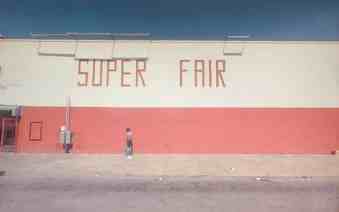PROJECT MAPPING AND OTHER TECHNOLOGIES
Exercise 2.4: Is appropriation appropriate?
- Read Geoff Dyer’s article on photographers using Google Street View.
- Also read these posts on WeAreOCA: http://www.weareoca.com/fine_art/photography-meets-textiles/ http://www.weareoca.com/fine_art/whos-afraid-of-appropriation/
- Have a look at the artists mentioned who appropriate images taken by other people and write around 300 words describing your response to artists and photographers working in this way.
My response
I can appreciate that google street view and google earth images are the ultimate objective viewpoint when they are shot. However when they are appropriated and used for a different purpose they are no longer objective, there has been a subjective input into them.
In Dyer’s article (Dyer, 2019), he discusses the approach of photographers who use such images and crop and frame them to create meaning for a viewer. I do like the work that Doug Rickards has done with Google street view; he says that he finds a particular freedom in using Google street view:
(The Guardian, 2019)
I admire the aesthetics in his appropriation, although to achieve this he does play with colour saturation and contrast in the images, “Colours are simultaneously enhanced and drained…Sometimes the sky gets rinsed out, other times it has vestiges of the turquoise ache of the Super-8 of old. All of which contributes to the sense we are seeing ghost towns in the process of formation” (the Guardian, 2019), this is particularly evident here:

(The Guardian, 2019
Conversely I am not at all inspired by the work of others like Michael wolf and Jon Rafman who select the incidental events or actions that street view catches, then isolate them and bring them to the viewer’s attention. I appreciate that they are being creating in what they are selecting and are elevating or at least changing the nature of the images. However it does not hold any interest for me.
Andy Warhol is an example of an artist who has appropriated images to use in his own artwork such as his Marilyn series:

(Revolver Gallery, 2019)
Warhol was quite blatant in their use and in some cases, like Campbell’s soups the free publicity that it gave to the owners was welcome. However he was not so fortunate with his Flower series (1966) where the original photographer brought a lawsuit against him for the use of her hibiscus flowers; this resulted in him using only his own images from then on. Apparently he previously said that art is what you can get away with but what he came to mean was “art is what you can get away with (out being sued)” (Revolver Gallery, 2019).
My thoughts:
I do not have a problem with artists transforming photographs in a creative way, and there are many “post photography” artists and works which I admire and have commented on previously (See my post on my identity and place blog: https://nkssite3.wordpress.com/category/learning-log-research-reflection/research/a4-research/additional-research/); however do agree with the post from the OCA above that when work is appropriated sources should at least be acknowledged (#weareoca, 2019). As for whether it is something I would work with in the future, I think this is highly unlikely, but it has been useful to open my eyes and mind to other practices and methods that are possible. I will be using street view in m planning for assignment 2.
References:
#weareoca. (2019). Who’s Afraid of Appropriation? – #weareoca. [online] Available at: https://weareoca.com/subject/fine-art/whos-afraid-of-appropriation/ [Accessed 1 Feb. 2019].
Dyer, G. (2019). How Google Street View is inspiring new photography. [online] the Guardian. Available at: https://www.theguardian.com/artanddesign/2012/jul/14/google-street-view-new-photography [Accessed 1 Feb. 2019].
Revolver Gallery. (2019). Andy Warhol and the Art of Appropriation. [online] Available at: https://revolverwarholgallery.com/andy-warhol-art-appropriation/ [Accessed 1 Feb. 2019].
The Guardian. (2019). Photographers using Google Street View – in pictures. [online] Available at: https://www.theguardian.com/artanddesign/gallery/2012/jul/15/photography-google-street-view [Accessed 1 Feb. 2019].

